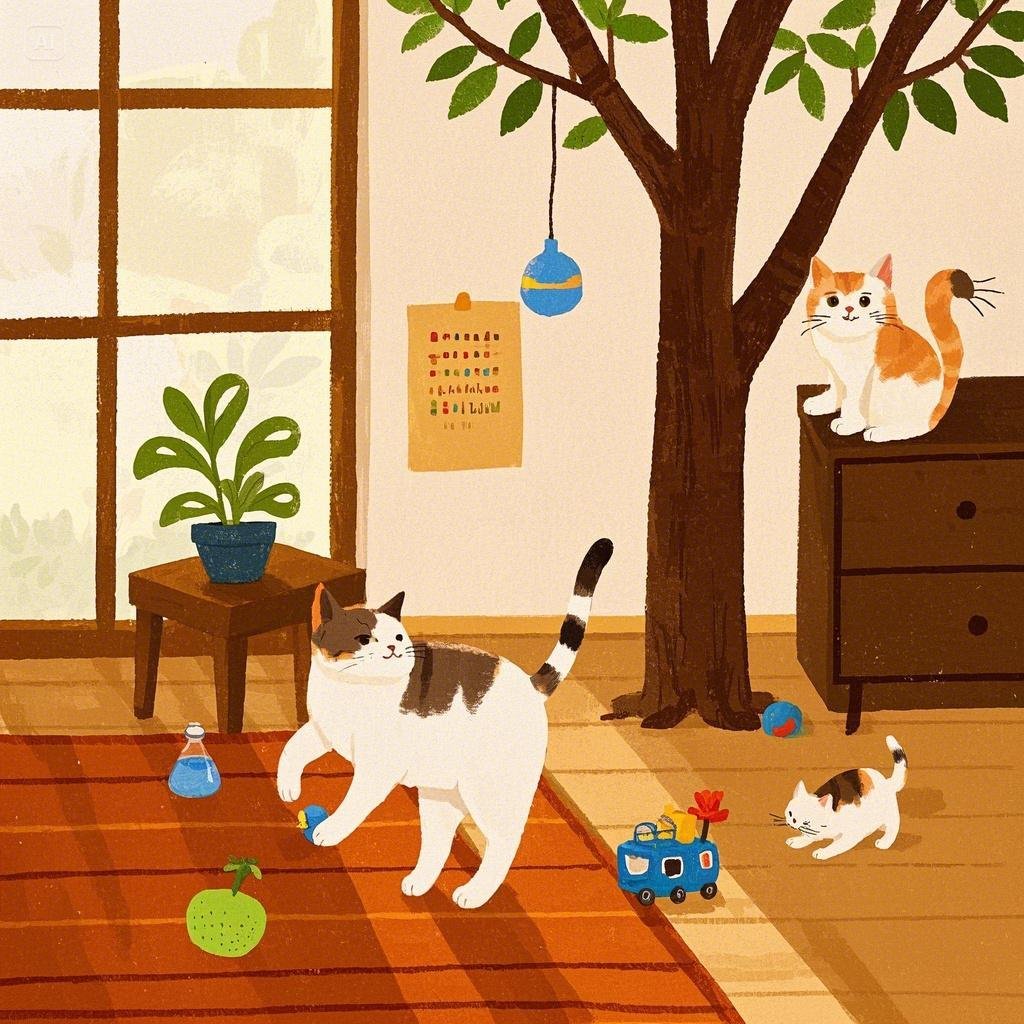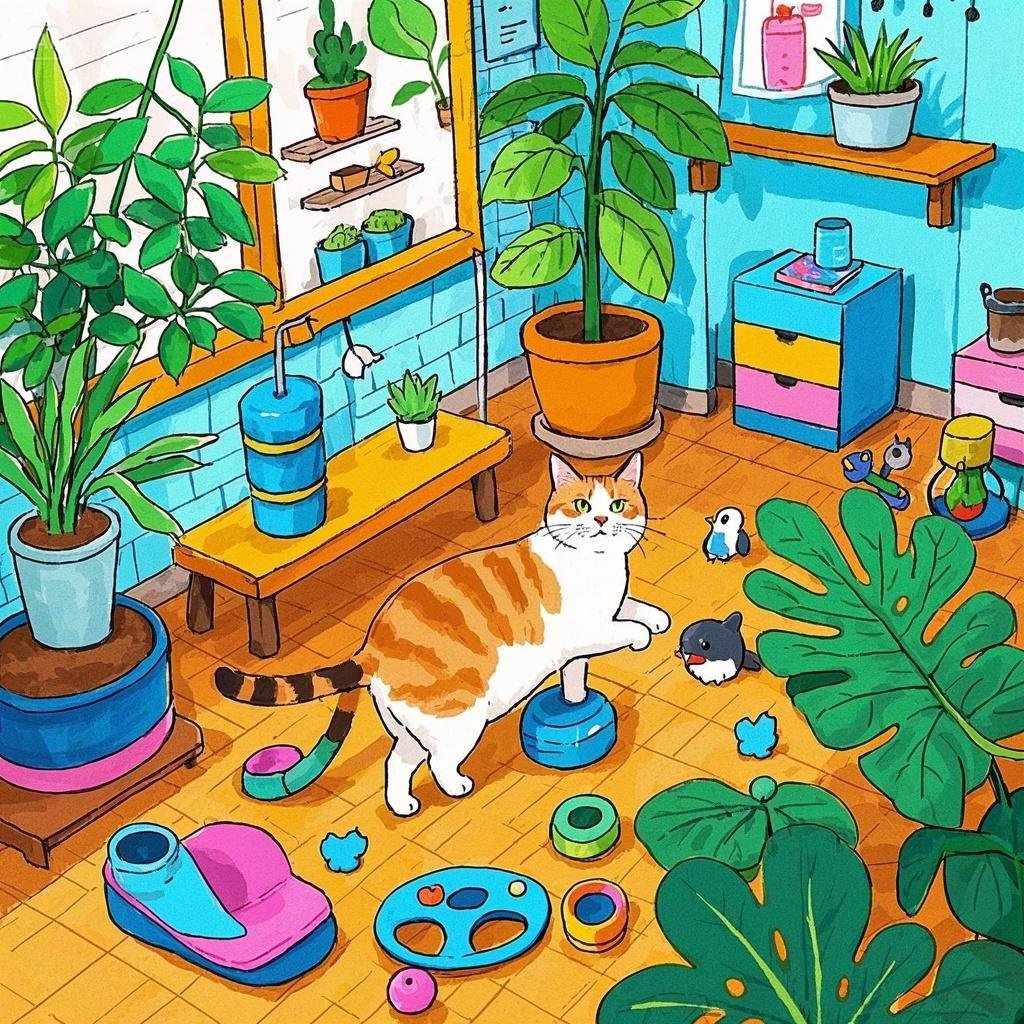Introduction
Indoor cats require mental and physical stimulation to stay happy and healthy. While keeping a cat indoors protects them from outdoor dangers, it’s essential to provide enough enrichment to prevent boredom, anxiety, and destructive behavior. This guide explores effective ways to keep your indoor cat active, entertained, and engaged, ensuring they live a fulfilling and enriched life.
The Importance of Keeping Your Cat Active
A happy cat is an active cat. Providing the right activities and environment benefits your feline in several ways:
- Prevents Obesity: Helps maintain a healthy weight and reduces health risks.
- Reduces Anxiety and Stress: Keeps your cat mentally stimulated and emotionally balanced.
- Encourages Natural Instincts: Supports behaviors like hunting, climbing, and scratching.
- Strengthens Bonding: Interactive play strengthens the bond between cats and their owners.
Best Ways to Keep Your Indoor Cat Active
1. Interactive Playtime
Using toys that mimic prey, such as feather wands or motorized mice, engages your cat’s natural hunting instincts. Play sessions should last at least 10–15 minutes several times a day to keep them entertained.
2. Cat Trees and Scratching Posts
Providing a cat tree or scratching post allows your cat to climb, scratch, and observe their surroundings. Look for multi-level cat trees with hiding spots, perches, and scratching areas to keep your cat engaged.
3. Food Puzzles and Treat Dispensers
Food puzzles stimulate your cat mentally and encourage problem-solving. These tools make mealtime more engaging and prevent overeating by slowing down food consumption.
4. Rotate and Introduce New Toys
Cats can get bored with the same toys. Rotate their toys every few weeks and introduce new ones occasionally to maintain their interest.
5. Create Vertical Space
Cats love to climb and observe their surroundings from high vantage points. Adding wall-mounted shelves, window perches, or cat-friendly bookshelves can encourage vertical exploration.
6. Training and Tricks
Contrary to popular belief, cats can be trained! Teaching simple tricks like sitting, high-fiving, or using a litter box on command provides mental stimulation and strengthens your bond.
7. Provide Safe Outdoor Access
A catio (cat patio) or enclosed balcony allows your cat to enjoy fresh air and sunshine safely. Even a secure window perch can provide entertainment as they watch the outside world.
8. Set Up a Bird Watching Station
Place a bird feeder outside a window to give your cat hours of entertainment watching birds, squirrels, and other wildlife.
9. Offer Cat Grass or Catnip
Planting cat grass (wheatgrass) provides your cat with a safe alternative to nibbling on houseplants. Some cats also enjoy rolling in or sniffing catnip for added enrichment.
10. Companionship
If your cat enjoys social interactions, consider adopting a second cat for companionship. A feline friend can provide endless entertainment and engagement.
How to Keep Your Cat Mentally Stimulated
1. Rotate Enrichment Activities
Change up play sessions, toys, and training exercises to keep your cat’s environment interesting.
2. Use Scent Enrichment
Introduce new scents such as catnip, silvervine, or even different textures and objects to stimulate their senses.
3. Encourage Foraging Behavior
Hide treats around the house or use puzzle feeders to encourage your cat to “hunt” for food.
4. Allow Exploration
Cats love to explore! Cardboard boxes, paper bags, and tunnels provide exciting new environments for them to investigate.
5. Talk and Interact with Your Cat
Engaging in conversations, petting, and gentle grooming sessions can provide companionship and mental stimulation.
Signs of a Happy Indoor Cat
A well-stimulated and content cat will exhibit behaviors such as:
- Purring and Kneading: Signs of relaxation and happiness.
- Engaging in Play: A curious, playful cat is a happy cat.
- Healthy Sleep Patterns: Sleeping well but not excessively out of boredom.
- Good Appetite: Eating at regular meal times without excessive begging.
- Using Their Litter Box Consistently: A stressed cat may have litter box issues.
Conclusion
Keeping your indoor cat happy and active requires a combination of mental and physical stimulation. By incorporating playtime, enrichment activities, and interactive elements into your cat’s routine, you ensure they stay engaged, healthy, and content. Whether it’s through climbing structures, puzzle feeders, or social interactions, a well-stimulated cat is a happy cat. Invest in their enrichment, and enjoy the companionship of a joyful feline friend!

